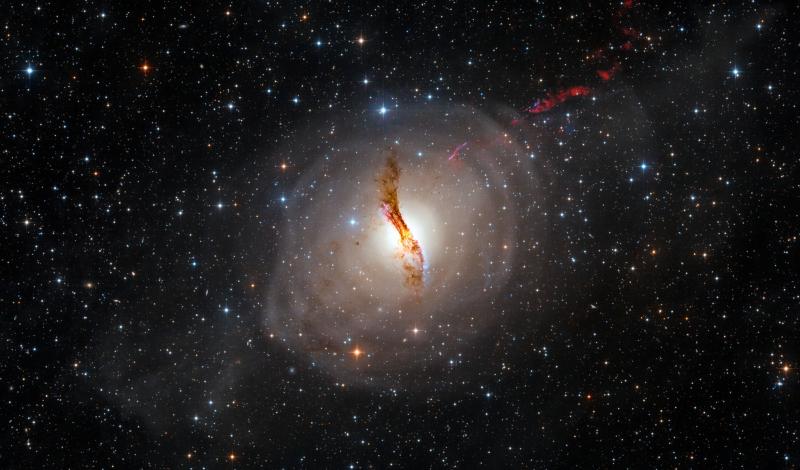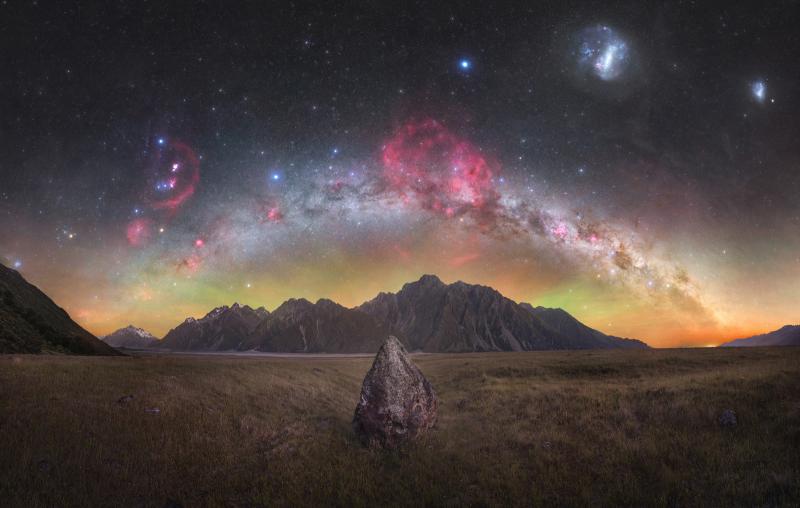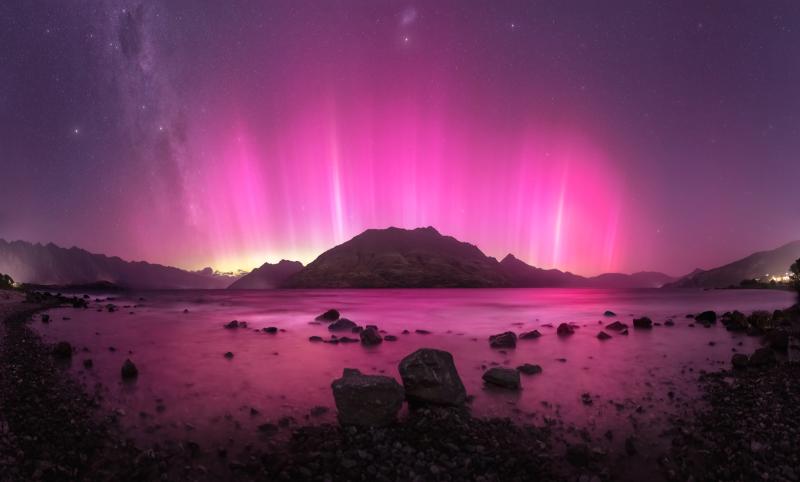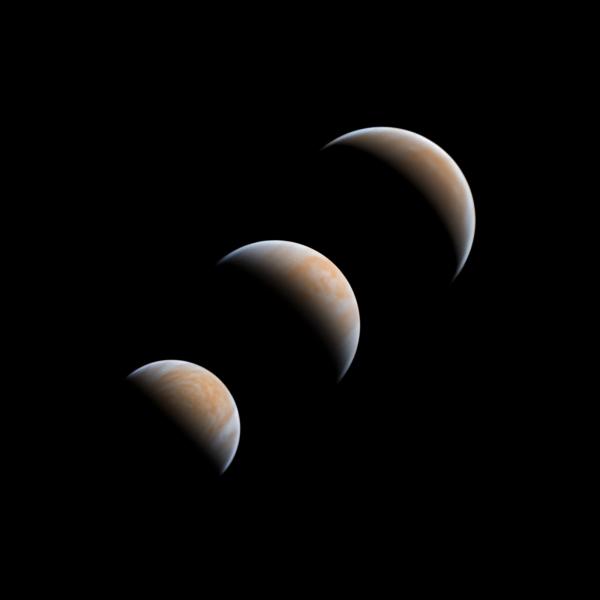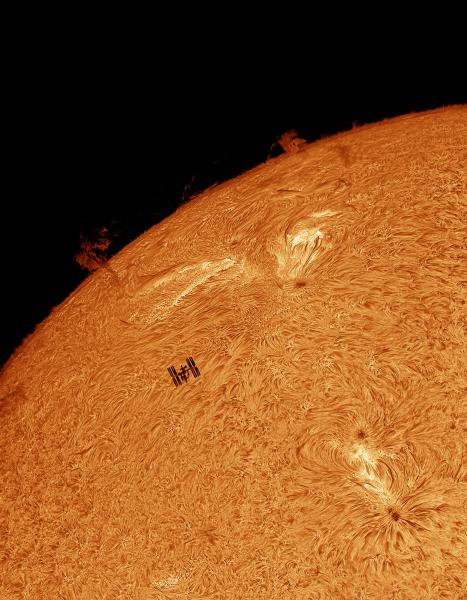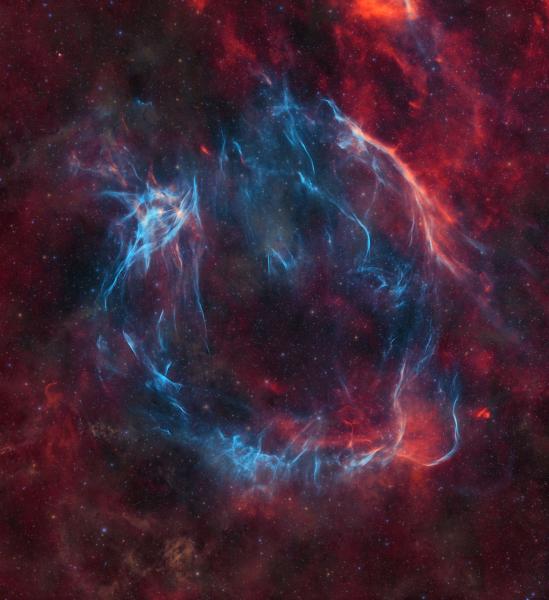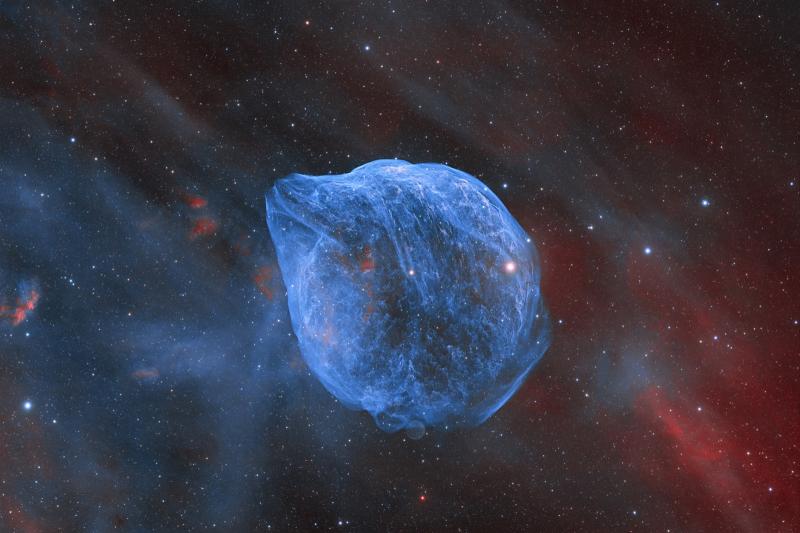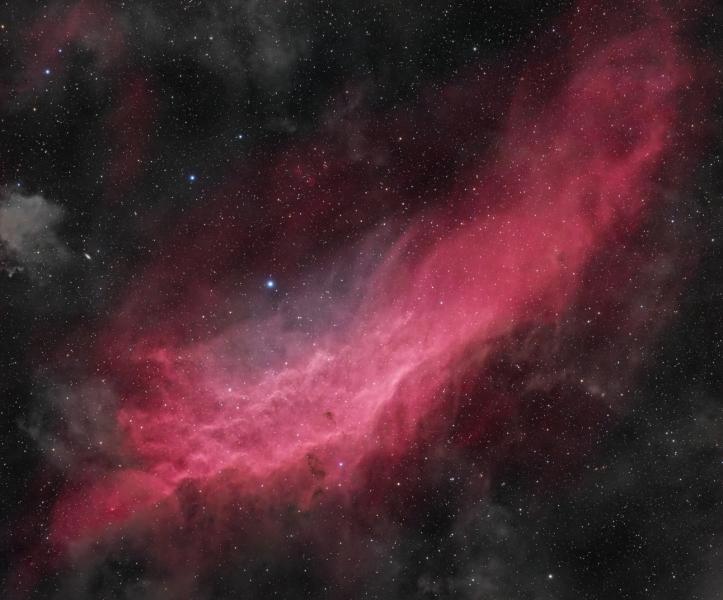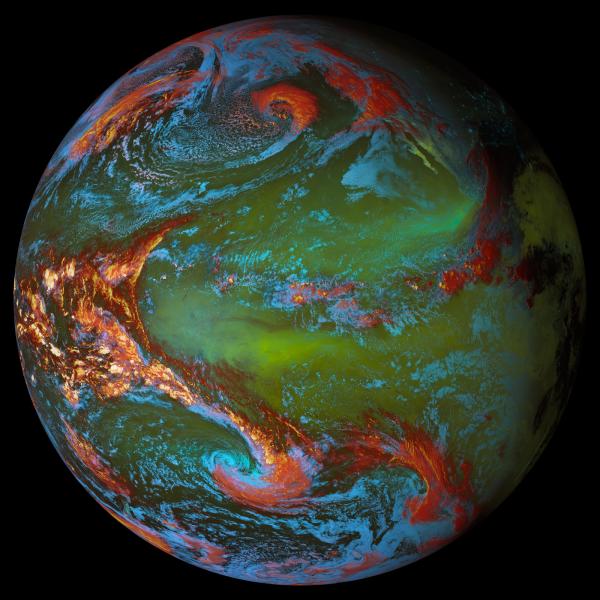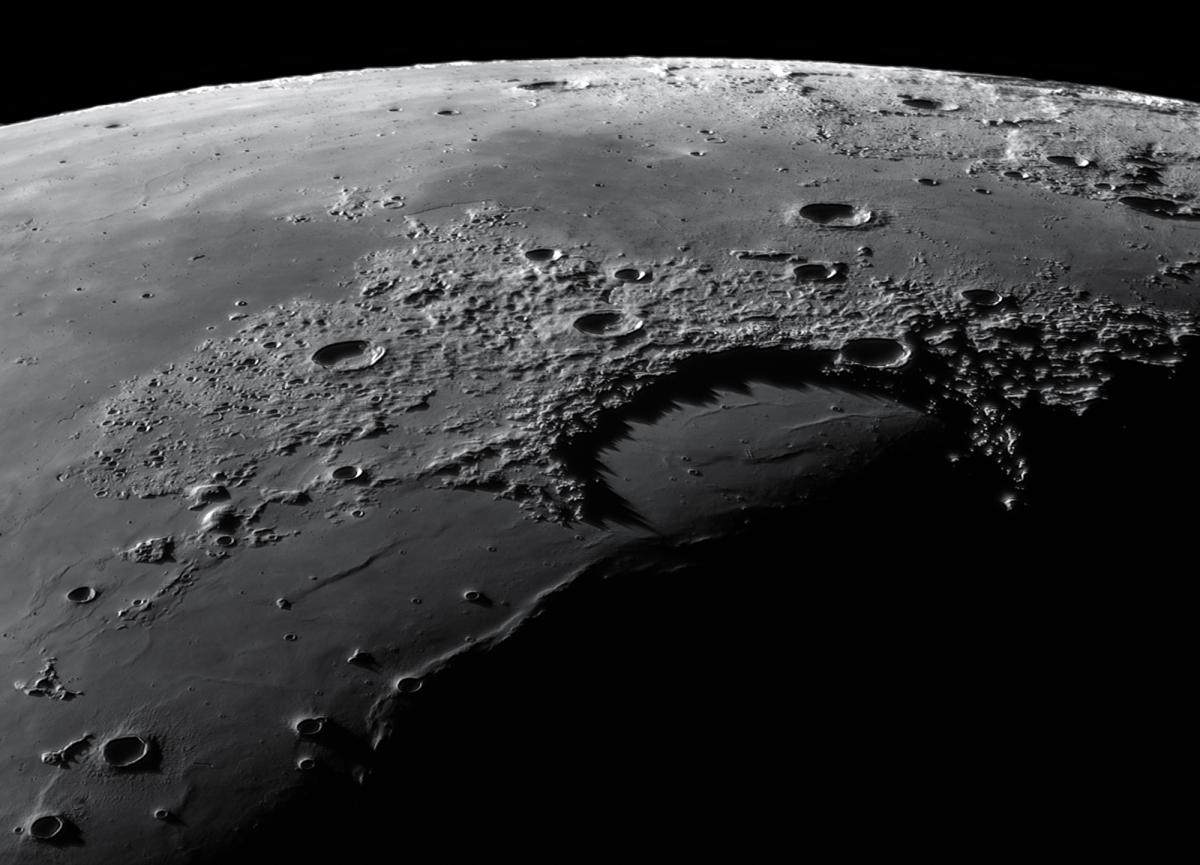
Category winner
Shadow Peaks of Sinus Iridum by Gábor Balázs
"I observed Jupiter and its Great Red Spot, but by the time I finished the Moon was already above the trees, at 20.5 per cent illumination. The craters were beautifully visible in the earthshine, even with the naked eye. However, they were even more stunning when viewed through my 30-centimetre telescope," says Gábor.
"While observing the various craters and surface formations, one in particular caught my attention – Sinus Iridum. I spent a considerable amount of time observing it at different magnifications. The shadow spikes spreading in a semi-circle were a delightful sight. Following my naked eye observation, I used a monochrome camera with a filter to capture the area in the best possible way. Many smaller craters can be seen next to the approximately 260 km diameter bay. The crater visible in the upper right corner, Pythagoras, is particularly noteworthy. We were able to see it almost from the side that morning thanks to the libration [wavering of the Moon as viewed from Earth]."
Taken in Budapest, Hungary, 10 September 2023
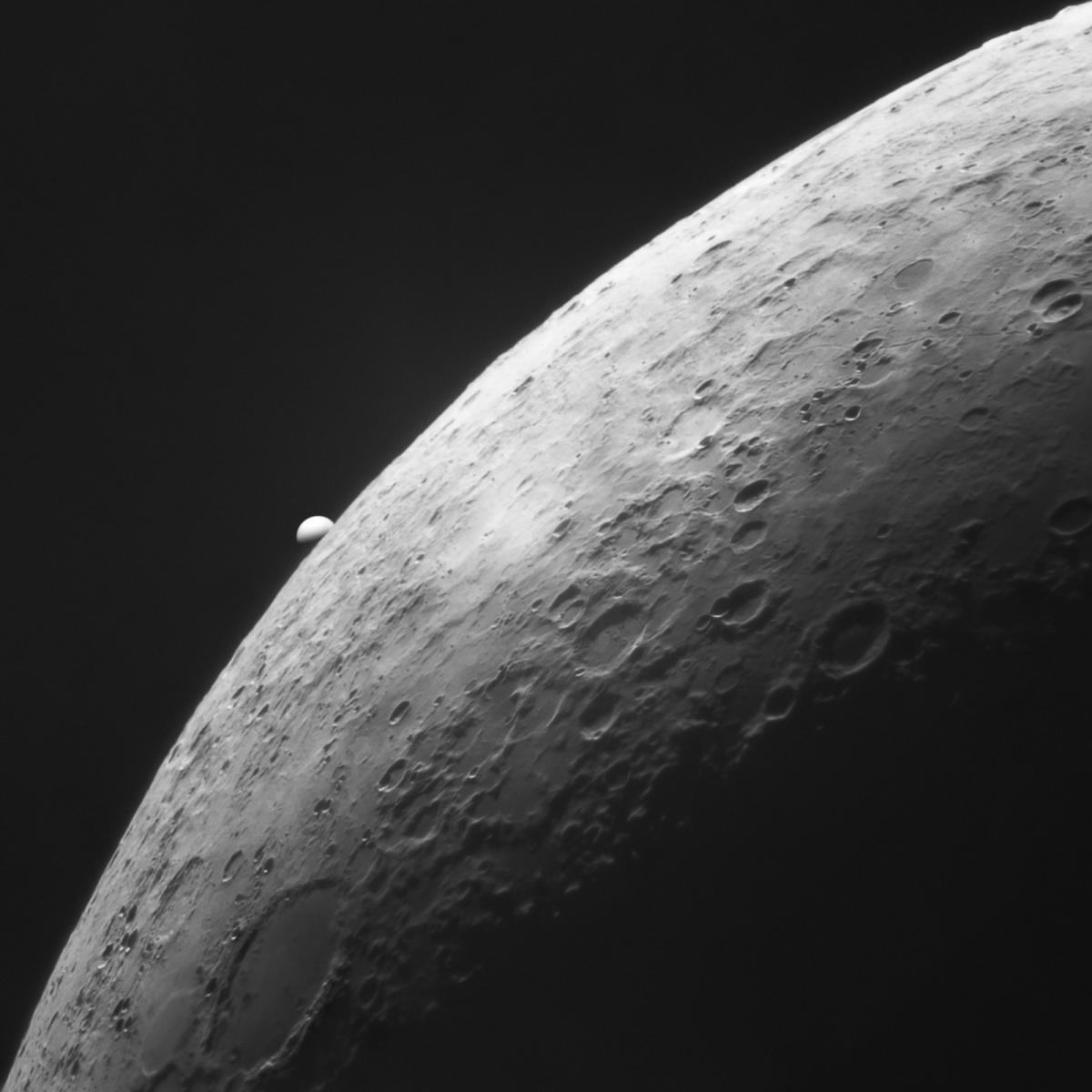
Runner-up
Venus and the Moon in Infrared by Lóránd Fényes
"The year’s only planetary occultation was set to be a spectacular event. A friend of mine helped me out so that I could capture it during the day. I skipped work and took his telescope with me to use with my own equipment. This was a special experience; while my friend was simultaneously detecting the occultation on his other scope, I was taking pictures," Lóránd reminisces.
"The sky wasn’t particularly good, with lots of cloud cover interfering with the image capture but the whole process was a memorable experience. I deliberately took the picture in a mono, infrared range. I once saw a great NASA photo of Saturn (taken from one of the space probes) in mono and it had such an artistic, abstract effect that it inspired me to take an aesthetically similar picture. Hence this framed edit, with the Moon running from corner to corner, and Venus in a golden section – a little art in science."
Taken in Érd, Pest, Hungary, 9 November 2023
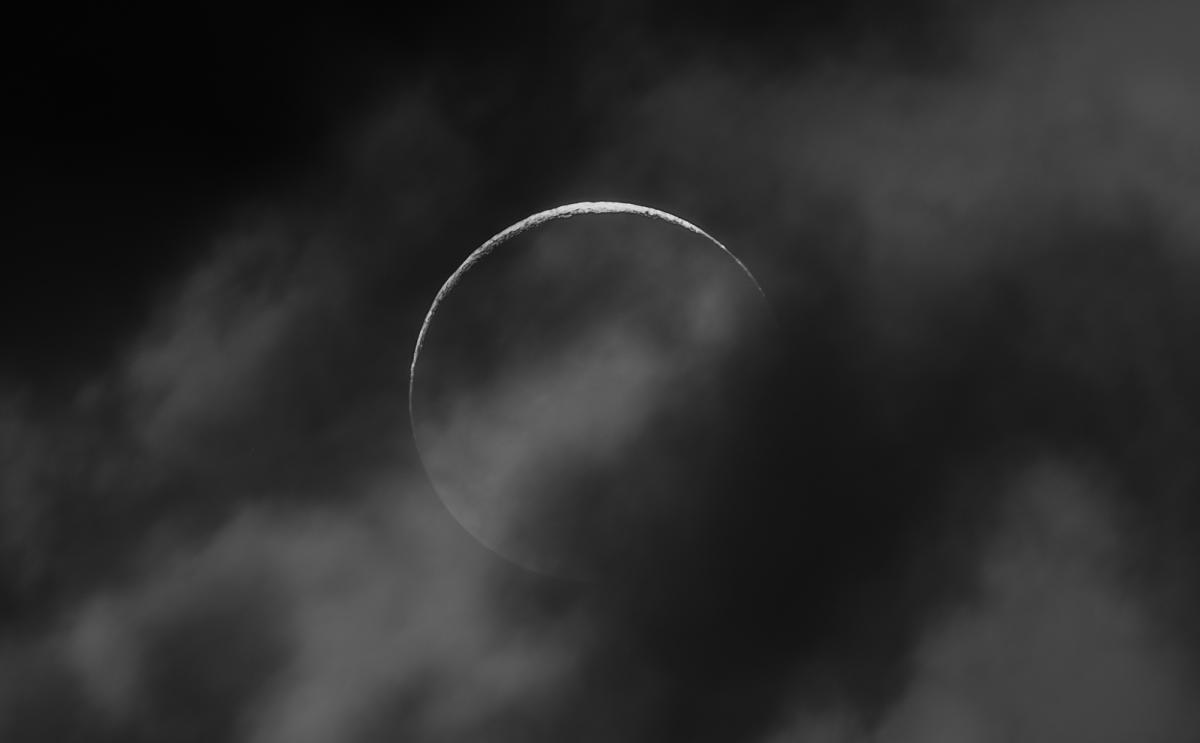
Highly commended
Crescent by Jinyuan Chen
Jinyuan says, "On the night this photograph was taken the Moon was only a tiny crescent. In fact, I had not planned to photograph the Moon at all. It just so happened that upon aligning the polar axis of my mount with the celestial pole, when I was about to continue photographing what I had intended, I looked up and saw the crescent Moon that was about to set. I was struck by its sheer beauty. I turned the equatorial mount, aimed it at the Moon and pressed the shutter a few times.
"Due to the surrounding clouds, the crescent looks as if it was resulting from a solar eclipse, which has, in a way, compensated for my regret of not having ever photographed an eclipse before. I tried to produce a colour version of this image also but it was not as visually stunning as this greyscale version."
Taken in Launceston, Tasmania, Australia, 16 October 2023
See the full shortlist
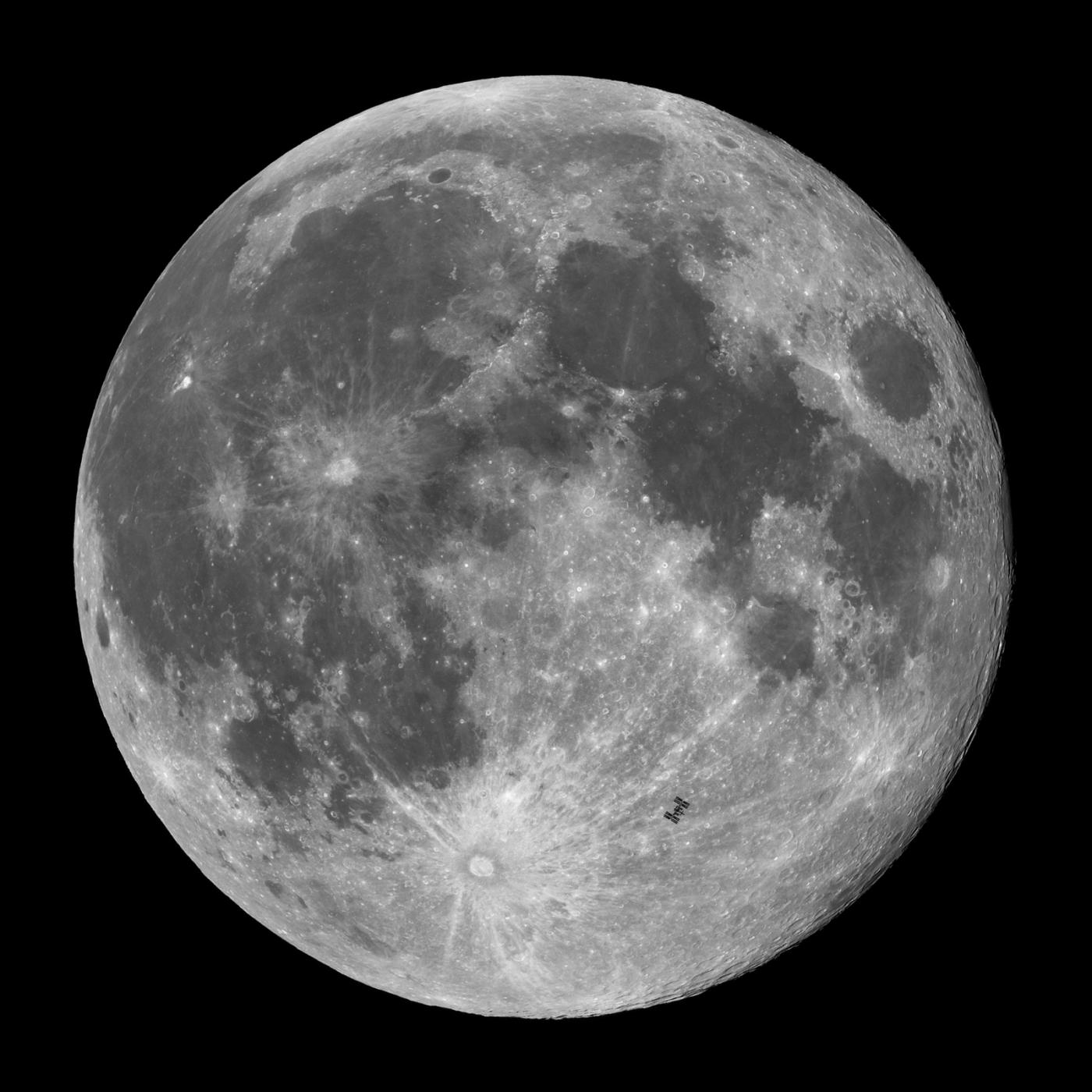
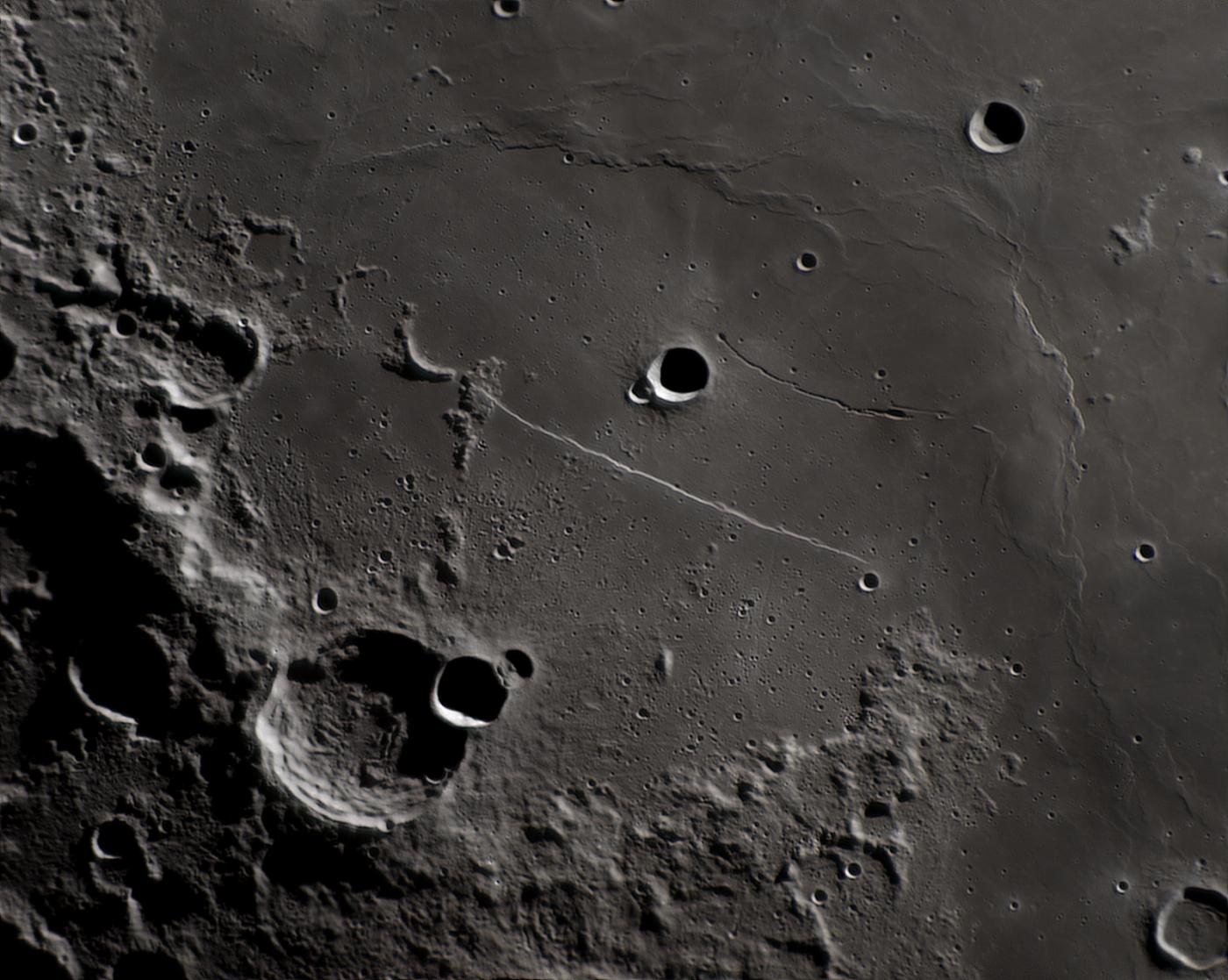
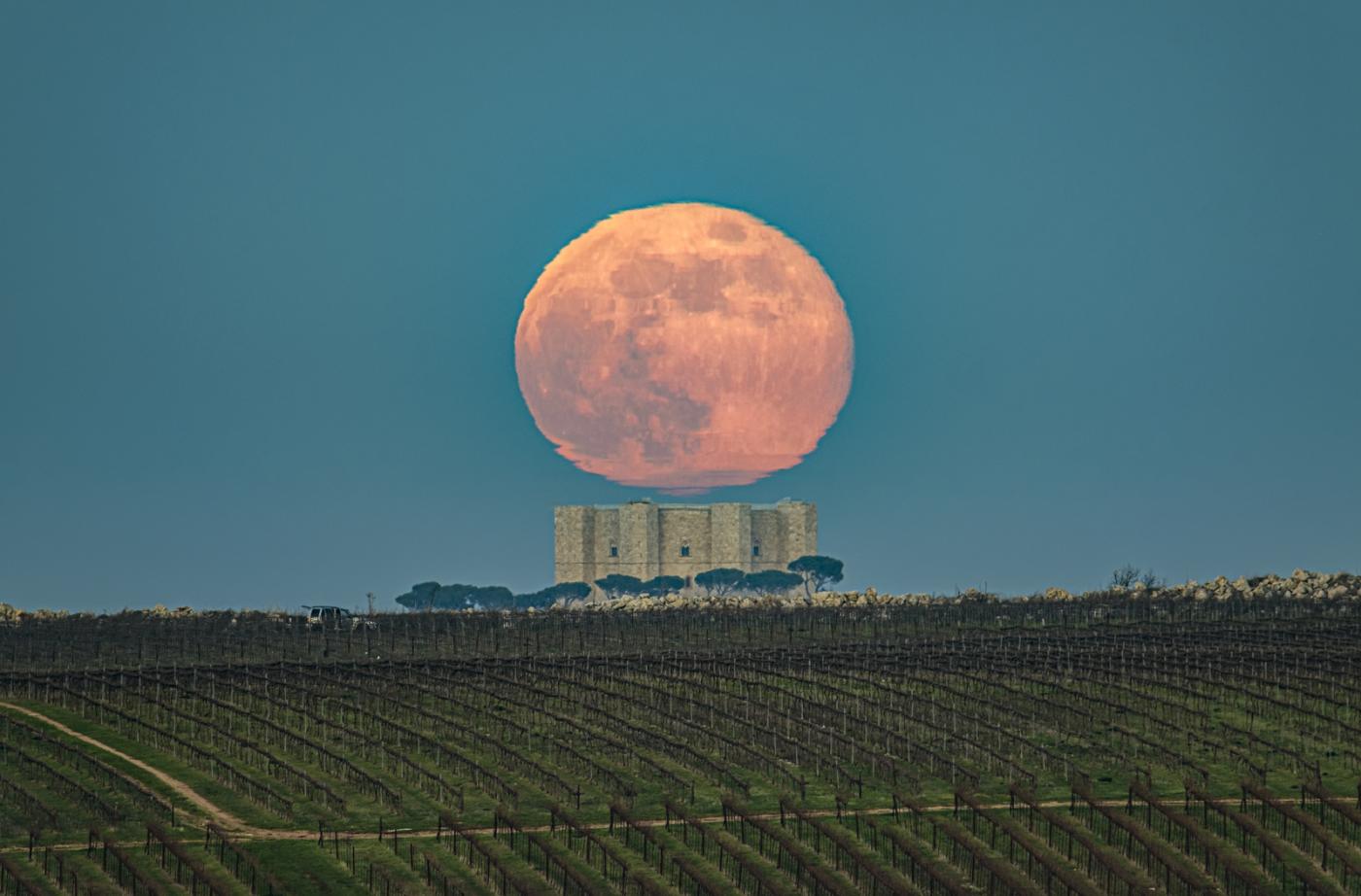
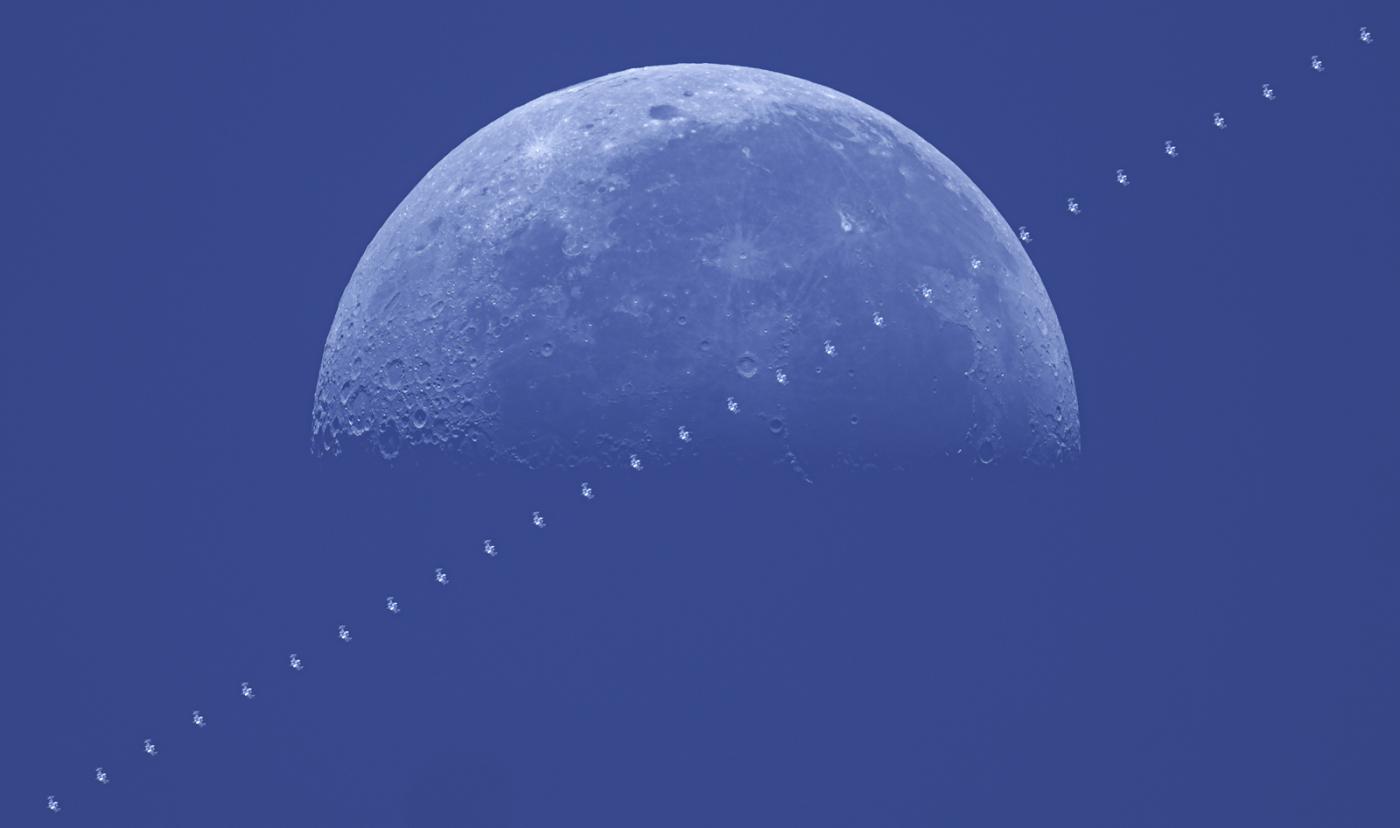
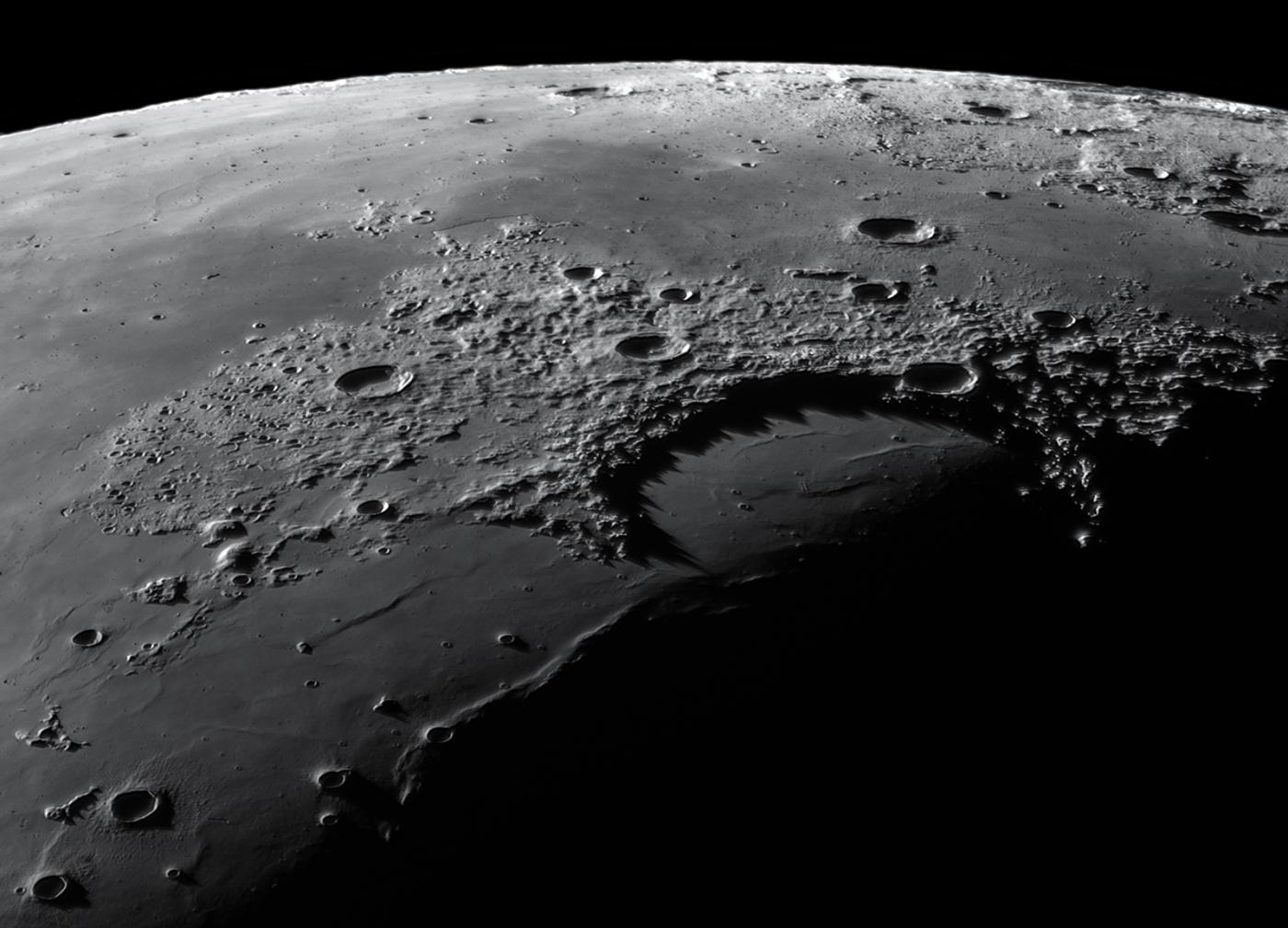
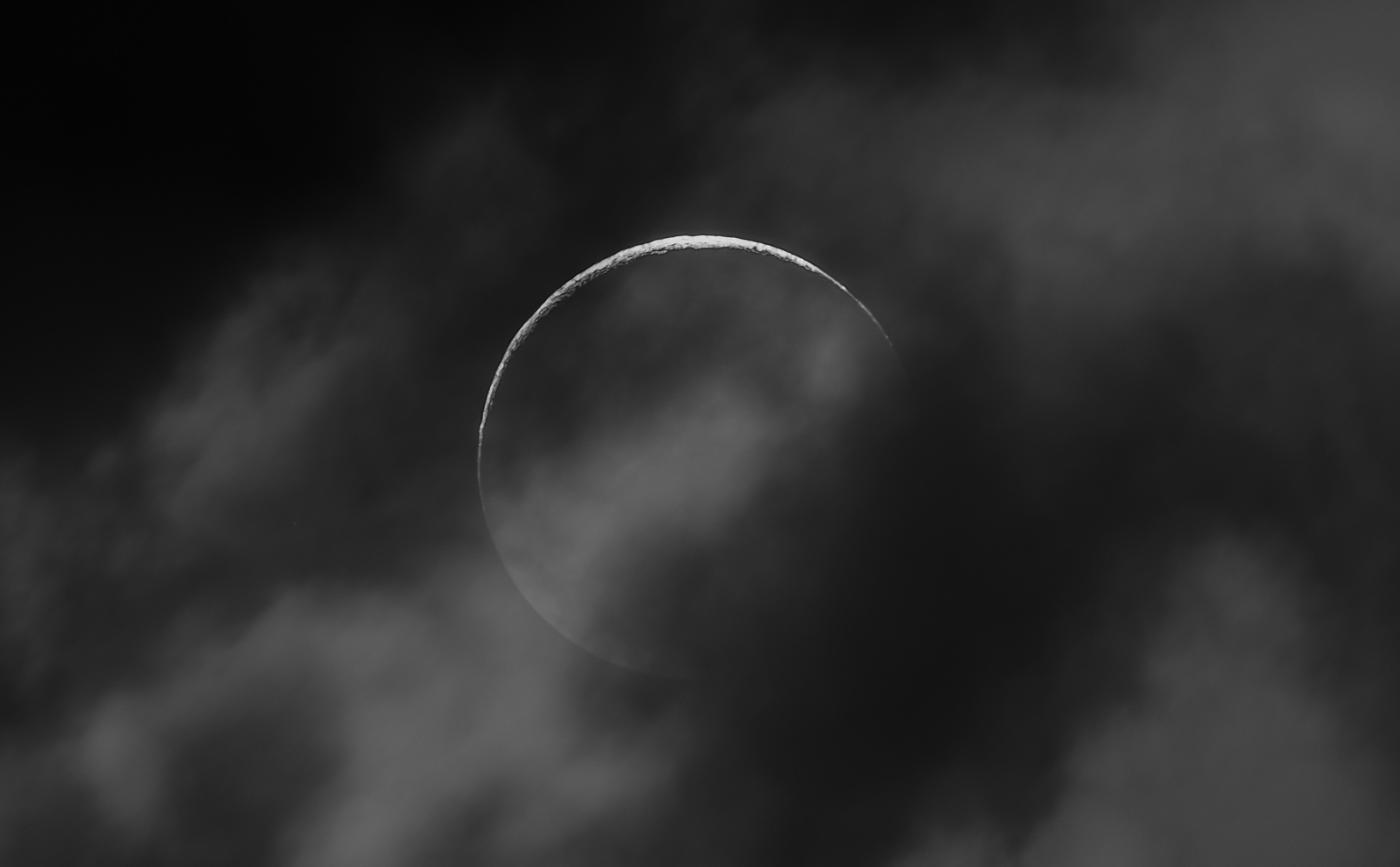
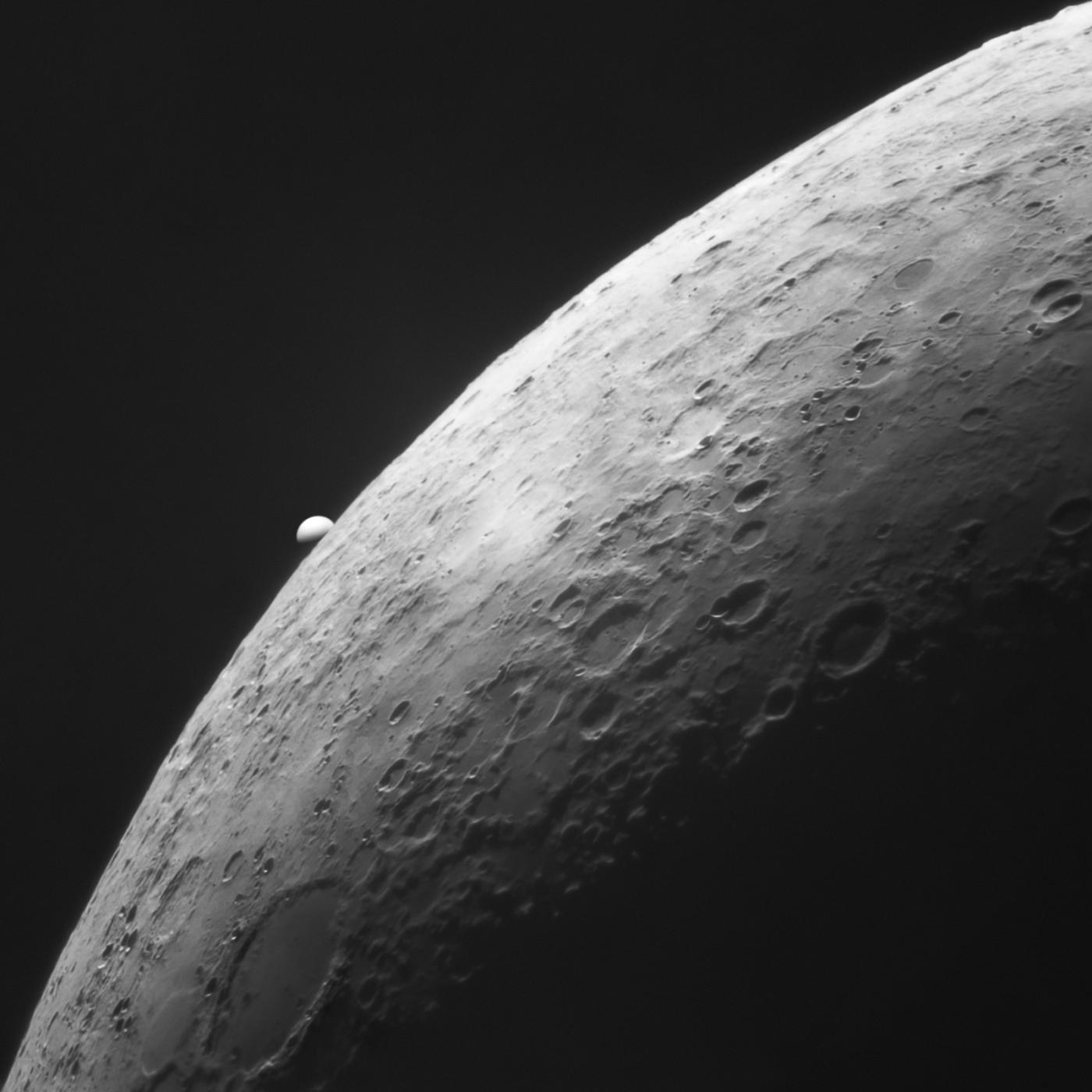
See the full shortlist
Never miss a shooting star
Sign up to our space newsletter for exclusive astronomy news, guides and events from Royal Museums Greenwich.
Explore more categories
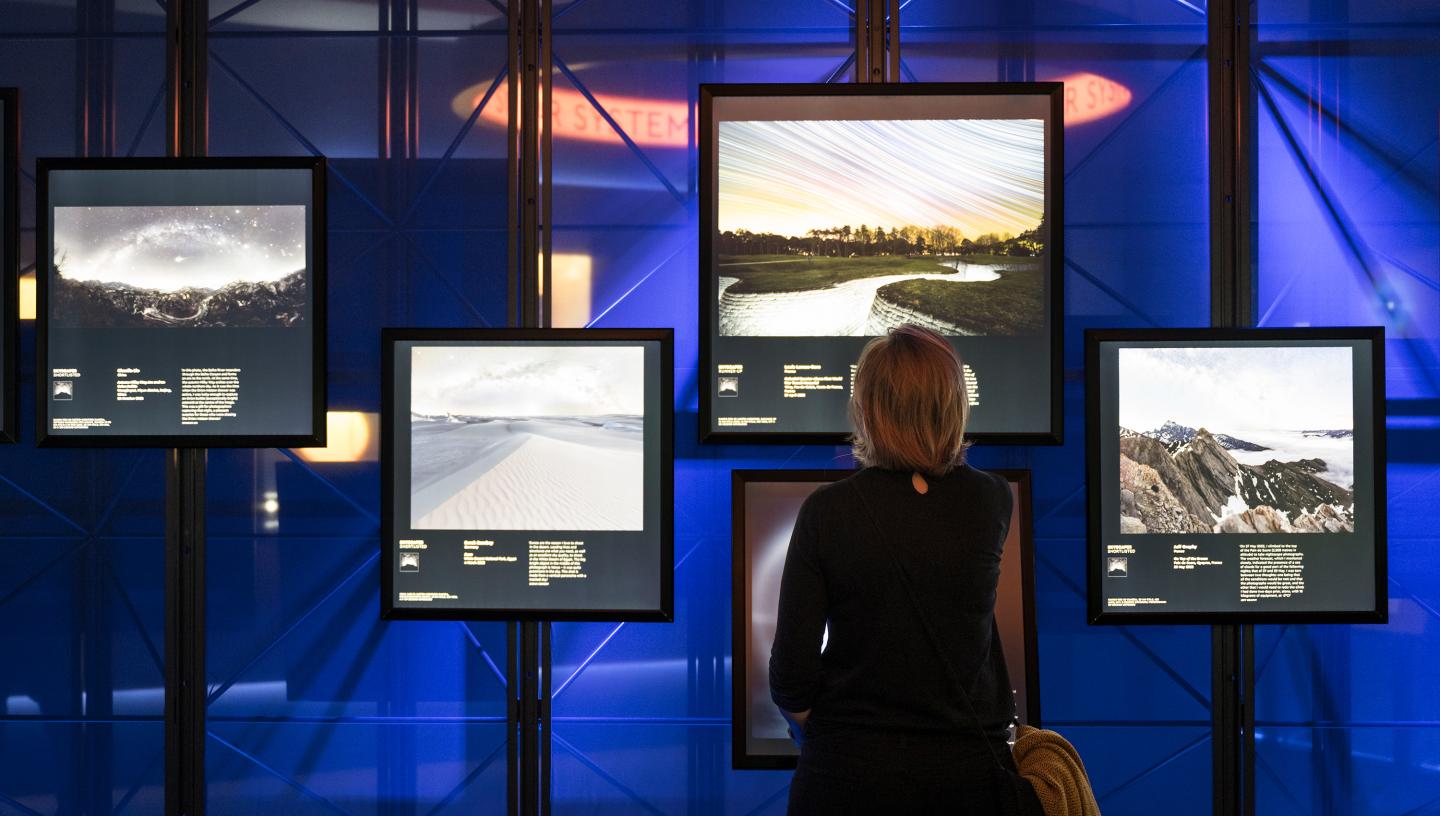
Visit the exhibition
Our partners



